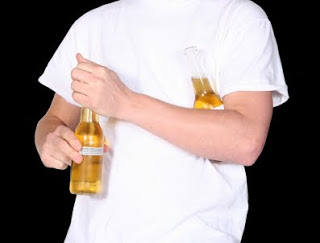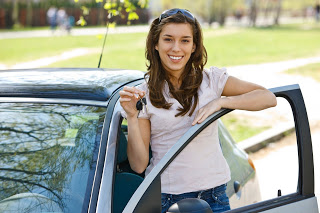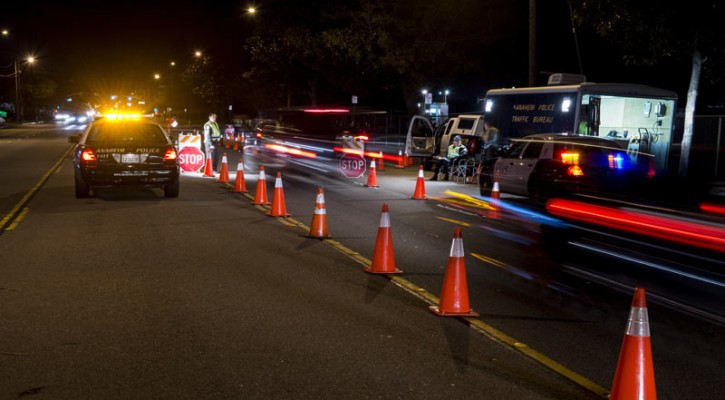
Alcohol Access and Your Teen: Is Your Teen Mature Enough to Drink?
March 12, 2009
So your teen is having some friends over to “hang out.” Your teen wants you to provide a movie, snacks, and a six-pack of beer. Should you do it? Isn’t it safer to have your teen home with you so you can provide supervision? When you were young, the drinking age was 18, and you turned out fine. Isn’t it more important to teach your teen to be a responsible drinker than to abide by a law that features an arbitrary age limit?
Some parents do provide teens with alcohol, or simply look the other way when their teens drink, espousing a “kids will be kids” attitude. They think there is nothing they can do to stop the teen from drinking. They fear their teen’s reaction to a strict prohibition against drinking. They want to be their teen’s friend because they want to keep the lines of communication open.
Some parents think that if the teen only drinks alcohol in their own home, the parents will be in control of the amount consumed. They think they can keep watch over their teen to make sure that nothing bad happens while the teen is intoxicated. They reason that at least this way, their teen isn’t driving drunk or riding with another drunk teen. They rationalize that if they let the teen’s friends sleep over, everyone will be safe.
But these parents aren’t taking many facts into account that refute the notion that parents should allow underage children to drink:
- Teenagers are not physically, mentally or emotionally ready to be under the influence. Even one alcoholic drink is too much for their developing bodies and brains.
- For every year under the age of 21 a teenager begins drinking alcohol, they are five times more likely to battle a lifetime of alcohol abuse and dependence (National Institute on Drug Abuse, 2005)
- Adolescent use of alcohol increases the risk of dependence because teens’ brains are not fully developed. The prefrontal cortex, which we use to assess situations, help us use good judgment, and keep our emotions and desires under control, does not develop completely until we are in our early 20s (NIDA, 2007)
- Teenagers may look mature, but their bodies are still developing. They require a lower level of consumption of alcohol to obtain a rapid “high,” which means their judgment is affected almost immediately, but they also have increased levels of alcohol tolerance, making it easy for them to overindulge.
- Teenagers are emotionally immature. They are still learning about themselves, relationships, and what direction they should take in life. Because even a small amount of alcohol reduces inhibitions and impairs judgment, they may react emotionally while under the influence without considering the consequences of their behavior.
- The use of alcohol by teens increases the risk of activities that may result in serious long-term consequences, including:
- Use of other drugs (alcohol is a gateway drug because its use compromises judgment and reduces inhibitions)
- Driving under the influence
- Alcohol poisoning from binge drinking (teens often binge drink to relax and may participate in drinking games that result in ingestion of large quantities of alcohol in a short period of time)
- Increased sexual activity and multiple sexual partners due to lowered inhibitions, which increases the risk of pregnancy and/or sexually transmitted diseases
- Exacerbation of underlying, perhaps undiagnosed, mental illness
- Violence and rape (whether the victim is under the influence or not)
- Suicide
Parental accountability for social hosting is on the rise. Twenty-four states have enacted social hosting laws to hold adults criminally responsible for providing alcohol to minors. No state makes it legal for an adult to provide alcohol to other people’s children. Civil suits can result in the loss of many or all of a person’s assets – whether they knew alcohol was being served in the home or not. Turning a blind eye is not an excuse.
When you host a gathering for your teen, you must tighten your resolve. Avoid being a friend and focus on your role as the parent. The following tips will help you through the process:
- Set expectations with your teen ahead of time. Make sure your teen knows that you will not allow alcohol (or other drugs) at the party and that this is communicated to all guests. Ask your teen to tell you about any concerns she or he has about any of the guests or any situations that could occur. Make your neighbors aware of the party and enlist their help in monitoring the area.
- Make a guest list with your teen. Limit the number of teens so you can be sure of adequate chaperonage. Be sure you have contact information on each teen’s parent. Make sure guests and their parents understand that if a teen leaves the party, she or he won’t be allowed to return and parents will be called. Make sure parents who won’t be chaperoning know the start and end times of the party and will prearrange transportation.
- Limit guest access to certain areas of the house and property. Lock up all valuables, breakables, alcohol and weapons. Plan activities to occupy the guests. Provide plenty of snacks, soda and water. Set an example by not providing alcohol for any adults who are present. Regularly move through the party unannounced and as inconspicuously as possible, checking any off-limit areas. Collect all keys so you can keep track of who is arriving and leaving. Keep coats and purses in an area that can be monitored. Speak to each person before they leave; check for warning signs of impairment.
- If a guest arrives at the party already under the influence of alcohol or other drugs, keep them there while you call a parent to pick them up. If the guest leaves and someone is hurt or injured, you could be held responsible.
Tips for Teens: Handling Roadside Distractions on Spring Break
March 6, 2009
Spring break is an exciting annual event for many young people. They look forward to taking time off from the rigors of schoolwork to spend time with friends having fun in an exotic setting.
But this can also be a dangerous time for young people, especially when they drive to their destination, often accompanied by distractions such as passengers and loud music. Driving requires attention and awareness, along with the ability to make complex decisions and act on them quickly. For someone driving in an unfamiliar setting, this awareness is particularly important. Drivers in an unfamiliar setting can get distracted by:
- perplexing roads, signs, and signals
- getting lost or confused
- looking at maps or driving directions
- looking at the scenery
In this article, we will address the issue of how to handle roadside distractions when driving in an unfamiliar setting.“Roadside distractions” refers to any aspect of the environment that draws a motorist’s attention away from the task of driving. For example, a driver who is spending spring break in a beach town may face roadside distractions such as:
- Dart in and out of traffic
- Be over-excited or intoxicated
- Be skimpily dressed
- Include large groups of children
- Be carrying several items, such as beach towels and toys
Other drivers who:
- exceed the low speed limit
- run red lights and stop signs
- weave in and out of traffic
- play loud music
- call out from their vehicles
- Other road users who are riding motorcycles, mopeds, bicycles and skateboards
- Narrow roadways, closed roads, and detours
- Noise and bright lights from nearby hotels, restaurants, bars and amusement parksDrivers who are faced with this bewildering array of lights, sound and movement must continually refocus their attention on their driving. This is particularly important for inexperienced drivers whose control of the vehicle may be somewhat tenuous; a crash could occur very quickly. The following tips will help:
Minimize distractions inside the vehicle:
- Turn the stereo off
- Ask passengers to quiet down
- Don’t eat, drink or smoke
- Turn your cell phone off
- Ask a passenger to act as a navigator instead of looking at the map or directions yourself
- Drive at or below the posted speed limit
- Maintain an adequate following distance
- Use your turn signal
- Keep driving normally and turn around in a safe place if you miss your turn
Scan the road ahead and your mirrors for trouble:
- Watch the road ahead while taking quick glances further ahead and in your mirrors
- Don’t let yourself be distracted from scanning – while you’re staring at one thing, another hazard could develop outside of your range of vision
Ask yourself “What if…?”
- What if that pedestrian steps into the street?
- What if that bicyclist falls?
- What if that traffic light changes suddenly?
- What if that weaving driver is drunk?
Avoid careless, reckless, aggressive drivers and drivers who may be intoxicated:
- Keep a safe distance from these vehicles
- Avoid challenging these drivers with your vehicle, eye contact, or gestures
Remember, driving safely helps ensure a safe, relaxing spring break!

Alcohol Access and Your Teen – Trust but Verify
March 5, 2009
Your teenage daughter is spending the night at her friend Mary’s house. Mary’s mother seems to be a responsible, law-abiding adult. You’ve met her several times and there is no reason for you to think anything would go wrong. Mary’s dad is involved in charitable organizations. Still, you hesitate – but then think, why not?
The sleepover at Mary’s house seems perfectly innocent. Your daughter and her friend get good grades in school. They haven’t given you any real reason not to trust them. They are good kids. You’ve had the “choices equal consequences” talk with your daughter. And you have to trust your teen sometime, right? You have to let go.
You are trying to be reasonable.
For many parents, this is where the conflict begins. It’s difficult to decide when to hold back and when to let go. But you can’t let your guard down, because teenagers are vulnerable to temptation and peer pressure every day. What happens when…?
Mary’s parents are busy fulfilling their social and community obligations and aren’t paying attention to what your daughter and Mary are doing. They aren’t home, or they have friends visiting, or they are just weary from work, and their guard is down. Or perhaps they wear rose-colored glasses when it comes to Mary and believe that close supervision of the girls isn’t necessary because she would never betray their trust.
The teens head out to a party at John’s house. Maybe they said they were going to the movies, bowling, or just to hang out with John. John’s dad is a “cool” parent. He understands teenagers, likes to have people around and wants to know what goes on with his kids. John’s dad is an involved parent. He is teaching his son to be responsible. He wants John to drink in moderation and to be a responsible drinker. He reasons that John is going to drink alcohol anyway, so why not teach him how to do it responsibly?
So John’s dad buys beer for the party. Not too much, and he sets limits, cautioning John that each teen should have no more than two beers. He stays home to monitor the situation. Everything seems to be going just fine.
But John’s father didn’t consider the following:
- Early alcohol use, independent of other risk factors, strongly predicts the development of alcohol dependence.
- Of all people who ever meet the diagnostic criteria for alcohol dependence in their lifetime, nearly half do so by age 21 and two-thirds by age 25.
- People who reported starting to drink before the age of 15 were four times more likely to also report meeting the criteria for alcohol dependence at some point in their lives (National Institute on Alcohol Abuse and Alcoholism, 2009).
- Compared to youth who wait until they are 21, youth who drink before age 15 are 12 times more likely to be unintentionally injured while under the influence of alcohol, seven times more likely to be in a motor vehicle crash after drinking, and 10 times more likely to get in a physical fight after drinking (National Research Council and Institute of Medicine, 2004).
- Due to differences between the adult brain and the brain of the maturing adolescent, many young drinkers:
- Are able to consume much larger amounts of alcohol than adults before experiencing the negative consequences of drinking, such as drowsiness, lack of coordination, and withdrawal/hangover effects.
- Are particularly sensitive to the positive effects of drinking, such as feeling more at ease in social situations; young people may drink more than adults because of these positive social experiences (NIAAA, 2009).
- Recent evidence suggests adolescent drinking can inflict permanent damage on the developing brain (National Research Council and Institute of Medicine, 2004).These statistics do not take into account the risk that John’s dad is taking; in many states, he can be held criminally liable for providing alcohol to minors on property he owns, leases, or otherwise controls. Civil liability is always an issue; no state makes it legal for an adult to serve alcohol to someone else’s children. But if you aren’t vigilant, a tragedy could occur before you are even aware of the danger your child faces.Strengthen your resolve. Be your teen’s parent, not a friend. Make sure your teen understands that other adults can’t give them permission to drink alcohol. You’ve already said no, and no one else’s parent can overrule you.
Talk to, and listen to, your teen. Maintain an ongoing, open dialogue about underage drinking and the risks involved. Create a code word so that if your teen needs to be picked up early, you’ll do so with no questions asked until the following day, when you are both calm enough to discuss the situation sensibly. Let your teen know that you will not approve any outing without sufficient notice so you can speak to the hosting parent first.
When your teen spends the night at a friend’s house or goes to a party, call the hosting parent to find out the details. Volunteer to chaperone and provide transportation. Make sure the hosting parent shares your concerns about the availability of alcohol and that none will be permitted. Ask how much supervision will be provided.
Limit the amount of time your teen is away from home. Make sure you are awake and alert when the teen returns. Greet your teen with a kiss and a hug so you can observe your child’s physical, mental, and emotional condition.
It’s tempting for parents to relax their vigilance once their children become teenagers. After all, the teens will soon be on their own and beyond their parents’ control. But the teen years are a critical part of your children’s development, and the decisions they make could affect the rest of their lives. This is not the time to let down your guard.

Spring Break Pedestrian Safety Tips
March 3, 2009
Many students look forward to spring break as a rite of passage. Taking a vacation from academics just as the weather turns warmer is a welcome break; it’s a time to hang out with friends and relax. Students often travel to a beachfront community so they can spend the week lying on the sand, playing beach volleyball, and participating in water sports.
Businesses in beachfront communities typically welcome spring breakers. But the increase in all types of traffic can be frustrating for year-round residents, and spring breakers themselves may drive carelessly or recklessly. This can prove deadly for pedestrians, who must often cross beachfront avenues to access the beach or nearby businesses.
According to the National Highway Traffic Safety Administration (NHTSA), in 2007, 4,654 pedestrians were killed and 70,000 pedestrians were injured in traffic crashes in the United States. On average, a pedestrian is killed in a traffic crash every 113 minutes and injured in a traffic crash every eight minutes. Forty-eight percent of all pedestrian fatalities in 2007 occurred on Friday, Saturday, or Sunday.
Tips for Pedestrians
Pedestrian safety is an important, though often unconsidered, aspect of spring break safety. As a pedestrian, follow these tips to make the most of your spring break:
- Put safety first. You are on spring break to have fun, but disregarding your own safety could result in tragedy.
- Don’t assume that motorists will yield to you when you are at an intersection or even in a crosswalk. Be especially careful at intersections where drivers may be turning onto another street. If you are in their path, they may not see you in time to stop.
- Use a designated crosswalk when possible. Stop and look left, right, and left again before crossing.
- Stand on the curb or off the roadway while you make sure it is safe to cross the street. If your view of the street is blocked, stop when you reach the edge line of the object and look around it before entering the roadway.
- Include motorcyclists and bicyclists in your visual search before you cross the street. A collision with any other vehicle, even one with only two wheels, could result in serious injury or death.
- If there is no sidewalk and you must walk in the street, walk facing traffic and be especially careful.
- At night, try to cross the street only in well-lit areas. Increase your visibility to others by carrying a flashlight.
Tips for Motorists
Of all the highway users, pedestrians are the most vulnerable, so drivers have a special responsibility to watch for and protect pedestrians.
- Let go of assumptions you may have about pedestrians so you can put their safety first. Many pedestrians are not fully aware of traffic laws, including those that pertain to signals. Many do not know the distance needed to stop a moving vehicle. Never assume that pedestrians will move out of the way. Be ready to stop to allow a pedestrian to cross safely.
- Many pedestrians take for granted that drivers will yield the right of way to anyone in the crosswalk. When they cross at an intersection with a Walk signal, pedestrians may not even look for oncoming traffic. Always watch for pedestrians in case they are not watching for you.
- Pedestrians waiting to cross the street often stand in the street instead of on the curb. Groups of pedestrians often separate when they are crossing the road. Some may even dash across the street without warning. When you see pedestrians waiting to cross, cover your brake and remain alert.
- Be especially vigilant about pedestrians at night, even in well-lit areas. It is often difficult to identify pedestrians at night.

Safety Features That Will Lower Your Teens Auto Insurance
February 26, 2009
Many parents view the licensure of their teen driver with some trepidation, not only because of concerns for their teen’s safety but due to practical considerations such as the high cost of auto insurance for teen drivers. Luckily, one of the ways you can reduce the cost of your teen’s insurance will also keep your teen safer – selecting a vehicle equipped with certain safety features.
Your insurance company may offer discounts for the following safety features. If not, it pays to shop around. Discounts for vehicle safety features vary widely among insurance companies.
- Air Bags: Passenger and driver-side dual airbags are now required in all vehicles sold in the United States. Air bags must be used with safety belts for maximum effectiveness.
- Head Injury Protection: This feature, which lessons the blow if your head hits the interior roof of your vehicle, has become standard in recent years. If you select an older vehicle for your teen, it may not have this safety feature.
- Advanced Headrests: These systems allow the back of the seat and headrest to move down and back if the vehicle is hit from the rear, reducing the forward motion and thus decreasing the severity of head and neck injuries.
- Automatic Daytime Running Lights: This feature makes it impossible for your teen to drive without headlights, making your teen’s vehicle more visible when driving, even during daylight.
- Anti-lock Brake System: This feature eliminates the need to “pump the brakes” when you have to stop quickly, preventing the wheels from locking up and the vehicle from skidding. ABS pumps the brakes for the driver; the driver keeps constant pressure on the brake pedal and concentrates on steering. This allows the driver to regain control in bad weather conditions or quickly avoid a crash.
- Traction Control: While ABS helps drivers maintain control while braking, traction control helps them do so while accelerating. This feature stops the spinning of a wheel due to wet roads, loose gravel, or fast acceleration by braking it, reducing the fuel or cutting spark plug ignitions, depending on the type of system, which improves traction.
- Electronic Stability System: This feature coordinates the ABS, Traction Control, and the “yaw” of your vehicle (how much the vehicle rocks side to side). The system reduces tire spinning, skidding, and tractionless cornering, keeping the vehicle’s tires in maximum contact with the road.
Read more about how to lower your teens auto insurance rates through driver safety and driver education courses.
